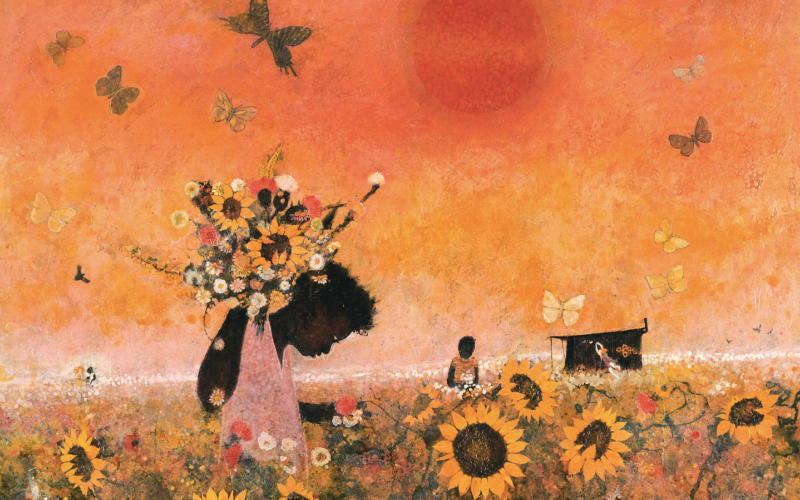Nordic Utopia? African Americans in the 20th Century looks at the significance of Denmark, Finland, Norway and Sweden as destinations for African American cultural figures including Ronald Burns, Herb Gentry, Dexter Gordon, William Henry Johnson, and Walter Williams through a range of artifacts, artworks (music, paintings, drawings, sculpture, ceramics, textiles), and documentary evidence (photography, film, and journalistic writing).
Ethelene Whitmire co-curated the Nordic Utopia? African Americans in the 20th Century exhibition with Leslie Anderson (March 23, 2024 – March 9, 2025).
Walter Williams | Southern Landscapes | Mixed Media | From the David C. Driskell Center at the University of Maryland College Park
During the 20th century, African Americans visited, performed, studied, and lived in the Nordic countries for a variety of reasons: a sense of adventure, love, seeking educational and occupational opportunities, freedom to explore their sexuality, freedom from Jim Crow segregation, among many other reasons. This exhibition captures their journeys as their sense of who they were was transformed through their Nordic encounters.
Nordic Utopia? African Americans in the 20th Century is the first comprehensive examination of the stories of these African American visual and performing artists, and features loans from the Smithsonian American Art Museum and National Gallery of Art in Washington, DC; the David C. Driskell Center at the University of Maryland, College Park; SMK—the National Gallery of Denmark; and Moderna Museet in Stockholm, among other public collections.
The exhibition catalog can be purchased from the University of Washington Press.
-
During the twentieth century, Black Americans visited and lived in Nordic countries, performing, studying, working, and seeking adventure, love, freedom to explore sexuality, and distance from Jim Crow segregation. Drawing from film, photographs, paintings, music, textiles, and dance, Nordic Utopia captures these journeys and ultimately reflects on how some African Americans have called and continue to call Nordic countries home. Calling on voices from hip-hop artist Jason Diakité to novelist and essayist James Baldwin, this book tells how African Americans were transformed through their Nordic encounters. The authors examine how “hip-hop ethics” illuminate the dynamic meaning of material culture in contemporary Afro-Nordic lifeworlds. Documented experiences by migrant and visiting artists probe the peculiarity of being a Black person in a remote “white” place while also using these experiences to reflect on and critique American racism. The book considers what specific Nordic artifacts and materials reveal about the complexities of place-making for Black people in a region where notions of innocence, isolation, and distance from the issues of the wider world also abound.
-
Leslie Anne Anderson is Director of Collections, Exhibitions, and Programs at the National Nordic Museum. Contributors: Ethelene Whitmire, Temi Odumosu, and Ryan Thomas Skinner
The exhibition was organized by the National Nordic Museum in Seattle, Washington and traveled to the Chazen Museum at the University of Wisconsin – Madison before concluding at Scandinavia House in New York City.
PRESS
Hyperallergic: When Scandinavia was a Hotbed of African American Culture
Smithsonian Magazine: Why the Nordic Countries Emerged as a Haven for 20th-Century African American Expatriates
Observer: How a First-of-Its-Kind Exhibition About African American Artists in the Nordic Countries Came to Be
Arte Noir: African Americans in the Nordics
Scandinavian Review: Nordic Utopia? Searching for African American History in the Nordic Countries


